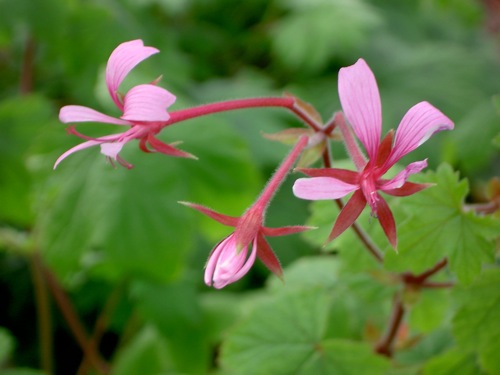Botany researcher Dr. Robert Jansen and his colleagues have received a four-year, $2.4 million grant from the Plant Genome Program to investigate the genomes of the geranium plant and 15 related species.

AUSTIN, Texas — Botany researcher Dr. Robert Jansen and his colleagues have received a four-year, $2.4 million grant from the Plant Genome Program of the National Science Foundation to investigate the genomes of the geranium plant and 15 related species.
The scientists want to understand why the DNA in these species have shown so much more rapid change over the course of their evolution than is typical for plants.
"They're a natural set of mutants," says Jansen, the Blake Centennial Professor in Systematic Botany at The University of Texas at Austin. "There are phenomena going on in the chloroplast and in the mitochondria of the geranium family that are not occurring elsewhere in the entire plant kingdom. They evolve very rapidly, and there's an incredible amount of variation in terms of how the genomes are organized."
Jansen and his co-investigators first documented how truly unusual these species were in terms of their variation and the speed of their evolution. In the earlier work, however, the labs were looking at the chloroplast and mitochondrial DNA in isolation from each other and not looking at nuclear DNA at all.
In this new project, they'll sequence the DNA in 14 members of the Geraniaceae and two related families. The data will be compared across the targeted species, and across chloroplast, mitochondrial and nuclear genomes, to investigate how the different compartments of the plant cell communicate with each other, and how they might have evolved in concert.
"The three genomes interact extensively, and lots of proteins are encoded in the nucleus and then transported to the chloroplast and mitochondria," says Jansen. "We hypothesize that the genes involved in the unusual phenomena are likely to be those connected to DNA repair and recombination. They're located in the nucleus, but they function in the chloroplast and mitochondria."
If candidate genes can be identified, says Jansen, they'll be compared to similar genes in species that don't exhibit the unique traits of the geranium family. The results are expected to improve our understanding of the genes and mechanisms involved in communication among different compartments within all plant cells.
The research may also contribute to the economic impact of the geranium, which contributes $4 billion annually to the worldwide economy, roughly half of that occurring in this country.
The project will have a significant outreach component.
Jansen and Tracey Ruhlman, a post-doctoral fellow in Jansen's lab who's a co-investigator on the grant, are creating a "research mini-stream" in the College of Natural Sciences Freshman Research Initiative. Jansen's lab will recruit high school students for summer research internships. Teacher training workshops will be offered each year and specific teacher training modules will be developed in cooperation with public service groups, such as the Texas Natural Science Center, University of Nebraska State Museum, and the Wonderlab Museum of Science in Bloomington, Ind.
Other investigators include Jeffrey P. Mower from The University of Nebraska, and Jeffrey D. Palmer from Indiana University.


















Comments